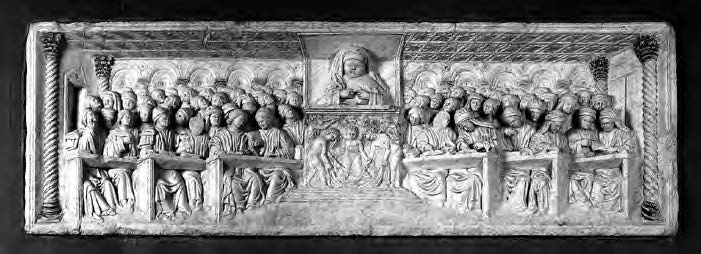Studium Urbis

In 1303 with the bull In Supremae praeminentia dignitatis, Pope Boniface VIII established in Rome the Studium Urbis, or an institution for higher education that was intended for non-prelates. A similar institution had already been established in Bononia (Bologna) in 1088, it was called Alma Mater Studiorum and its birth took place with different premises, that is, they were groups of students who met and through the collectio paid a teacher who were themselves to choose.
The institution for higher education in Rome, on the other hand, was born as an affirmation of the papacy's potestas universalis and that was initially the intention of Pope Caetani.
The seat of the Studium Urbis was located near the church of Saint Eustachius and offered studies of all kinds, but mainly those with a legal orientation.
The first years of Studium Urbis was not easy, and only in 1318 it was granted the right to recognition of academic qualifications; in fact, in the first fifteen years the faculty of "doctoring" was only of the Studium Curiae, the pontifical university reserved for the clergy. Studium Urbis was to be, according to the intentions of Pope Boniface VIII, a political instrument of the temporal power of the papacy and for this reason its administration was entrusted to the Senators who, at least in the initial phase, had the right to choose teachers.
Still during the 14th century the seat was close to the Church of Saint Eustace but its existence was endangered by scarcity of financial resources and by the situation in Rome where the continuous struggles between Guelph and Ghibelline families made it difficult if not dangerous to live and even the teachers preferred to leave Rome. In 1376 the Studium was transferred to Trastevere and because it risked "iam collapsum propter defectum doctorum" it was necessary to entrust the teaching to non-Roman teachers who were not compromised with the political struggles and were forced to reside in the schola district to try, in this way, to safeguard it. In the Studium Urbis the sciences that were taught, at that time, were law, medicine, grammar and logic.
One of the crucial problems in the early life of the Studium Urbis was the constant confrontation with the Studium Curiae, "two realities that are difficult to compare: if only for reasons of chronology and geography."
Over two centuries there were often exchanges between Studium Urbis and Studium Curiae but the latter progressively lost its importance when, after 1377, the seat of the papacy returned to Rome and the temporal dominion of the church began so that the Studium Curiae no longer had a reason to exist and the Studium Urbis began to transform itself from ".. the university of the city ... to the university of the prince" (Frova-Miglio).
The university was not brilliant at least until 1431 when Eugene IV solved the problem of financing the activities with the proceeds from foreign wine gabelles that were managed by the papal Camerlengo who, in addition to deciding the remuneration of the teachers, also had the power to choose them taking care their ideas were in line with Catholic orthodoxy. The teachings given in the fifteenth century were law, literary subjects, history and surgery.
In the second half of the fifteenth century among teachers of rhetoric professorship there were before Lorenzo Valla and then Pomponio Leto who held it from 1470 until 1497, the year of his death, and was a prolific teacher of university lecture notes for his disciples.
At the beginning of the fifteenth century, the circles of the Curia and in particular the most enlightened cardinals began to take initiatives to allow even the poorest young people to access education, even at the highest levels ...
Sign up and read the rest of the article!
by M.L. ©ALL RIGHTS RESERVED (Ed 1.0 - 16/09/2021)







Bibliography:
«5tudium Urbis» e «5tudium Curiae» nel Trecento e nel Quattrocento: linee di politica culturale